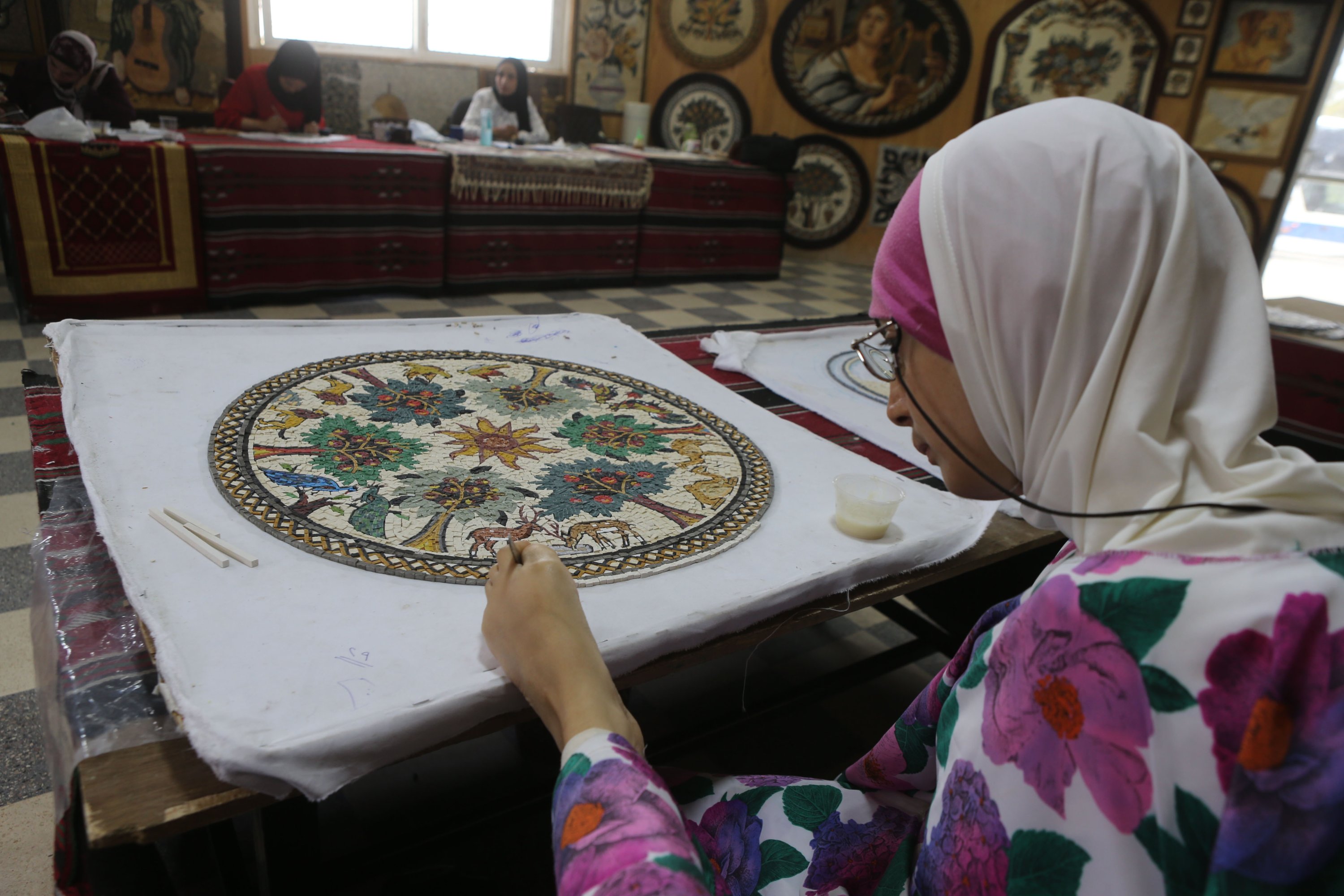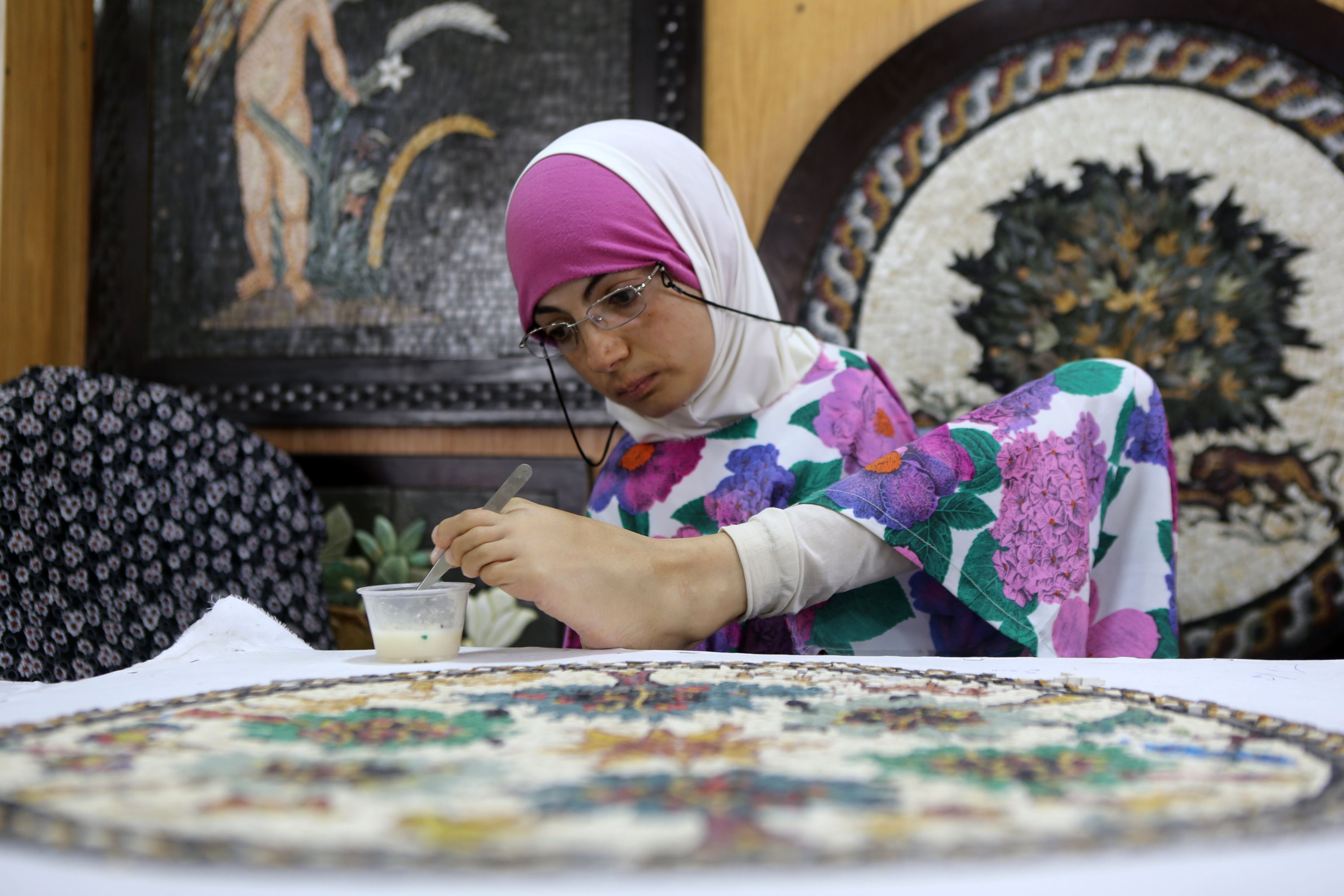© Turkuvaz Haberleşme ve Yayıncılık 2024
Jordanian Rahma Khairallah, who was born without arms, offers a glimmer of hope to other people with the same rare condition with her inspiring story in the art of mosaic.
The young woman, 36, depends on her feet for everything. But she decided to be an active member of society and resorted to the art of mosaic to create paintings that only the talented can master despite her rare condition.
Anadolu Agency (AA) visited Khairallah at the Mosaic House for Crafts and Handicrafts in Madaba province where she narrated her inspiring story.
Khairallah was born in the Shafa Badran section of the national capital, Amman, in 1986. Her family of six, her included, went through difficult times with her mother, who was a housewife, and father, who was a plumber. He had to quit his job because of health problems.
"When I was born, my mother remained in the hospital for a week before she found out about my condition," said Rahma.
When Rahma's father found his daughter born with no arms, he could not at first tell her mother about the condition of their newborn, but after a week he had no choice but to tell the sad news to his wife that he kept waiting in hospital.
"When my father came to her without me, she asked in a panic, and he replied that their daughter is fine, but there is one thing that must be said, and that is that her daughter was born without hands.

"My mother's response at the time was, praise be to God, and since that time she said I will name her Rahma," which means mercy, said Khairallah.
Khairallah said with pride that her mother taught her to use her feet and would give her things to put between her toes and watch her from afar.
Eventually, she became used to it and her mother taught and put her in a special center for mobility disabilities where her "abilities increased significantly."
Khairallah was educated until the sixth grade at a school for people with disabilities but was not accepted beyond that at any school, "on the pretext of not being able to bear my responsibility" even though officials knew she did not have health problems, she said.
Khairallah said her family did not own a house when she was growing up and government agencies did not provide any help.
Saudi Prince Nayef bin Abdulaziz saw Khairallah on a satellite channel 20 years ago and followed her story. He contacted the family and donated money that allowed them to buy land and build a house. He also donated "prosthetic limbs, and I went to the United States and returned to Jordan after three months with these limbs," she said.
"The Saudi prince promised me that I would perform the Umrah and Hajj, and that was actually done, and during my performance of the Hajj rituals I got tired of the prosthetics, so I had to put them in my travel bags, and unfortunately, those bags were stolen, and from that day I am left without them," she said.
Khairallah was silent and took a deep breath when asked how society views her.
"Fifteen years ago, I used to feel people's looks that indicated that they were alienating me, I eat and drink with my feet," she said.
People's reaction to her made her discontent but she resorted to patience.

In 2018, Rahma enrolled in a 13-day mosaic art course and participants were required to complete at least one painting.
Her voice was quiet and faint as she told the story of the mosaic training. But quickly rose with pride that appeared on her face.
"During the training, I managed to design three mosaic panels, and they were amazed by what I did," she said.
"The course organizers confirmed that what I did could not be done by healthy people, and it was not just a sympathy, as I got first place."
Smiling with pride, she said: "A graduation ceremony was held for the participants, and everyone stood and applauded for me, and I was happy with that."
"Now I am happy with my new job. A few weeks ago, a mosaic specialist in the city contacted me, asking me to work with them in the manufacture of various mosaic panels," she said.
Madaba is 33 kilometers (21 miles) south of Amman and its foundation dates to the Moabite era in the 13th century B.C.
The city is called the Mosaic Capital because most tourist sites contain mosaic paintings, in addition to the presence of centers that specialize in teaching the art.
